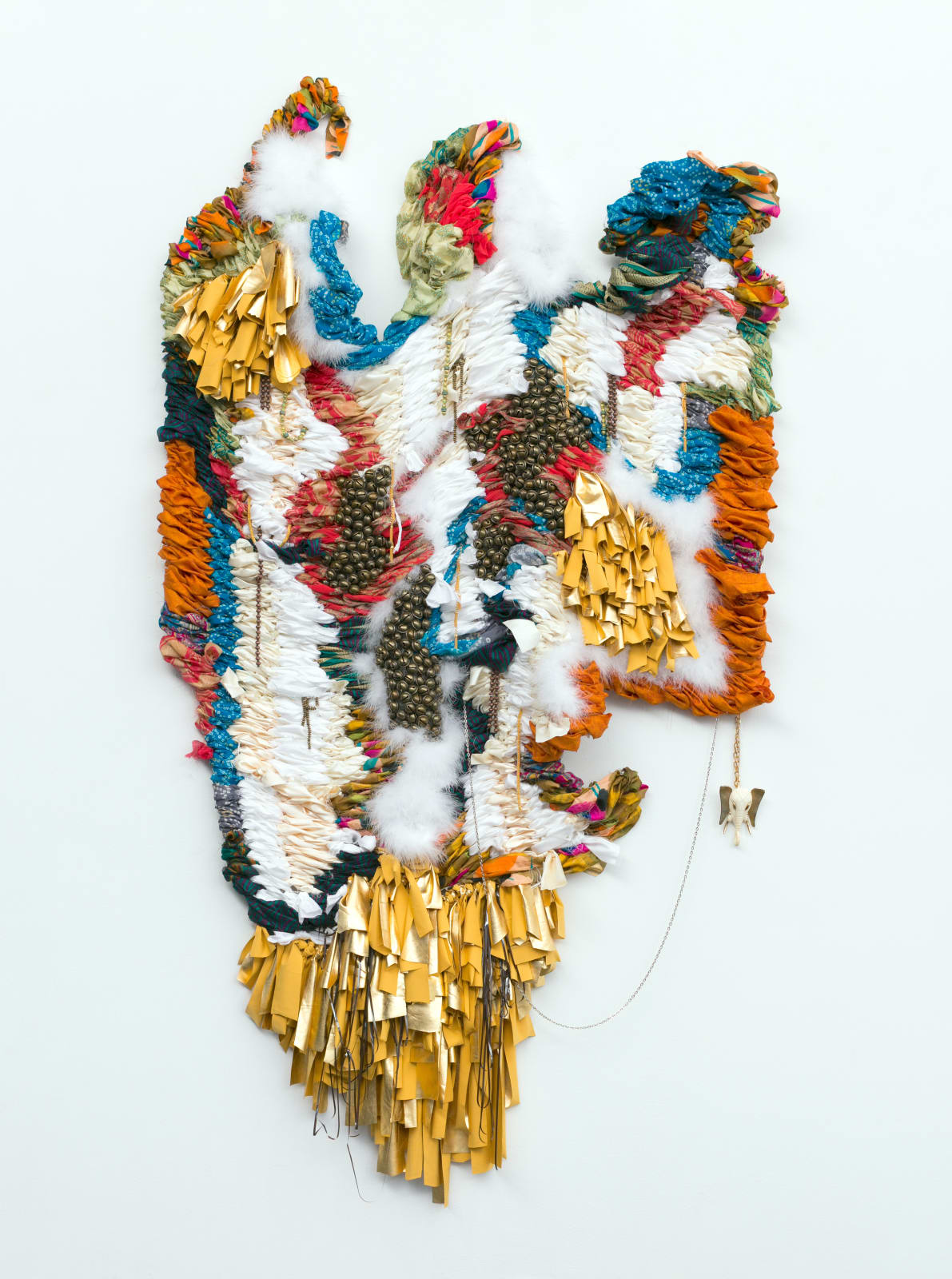-
Artworks
Suchitra Mattai Guyana, b. 1973
A Porous Heart, 2022Vintage saris, fabric, beads, chain, ghungroo bells, and boas78 x 48 in
198.1 x 121.9 cm8345Further images
A Porous Heart, by Suchitra Mattai, is weaved together from a mixture of materials that relate to the artist's search to locate herself within the context of her Indo-Caribbean heritage....A Porous Heart, by Suchitra Mattai, is weaved together from a mixture of materials that relate to the artist's search to locate herself within the context of her Indo-Caribbean heritage. Ubiquitous contemporary materials such as feather boas, beads and metal chains intermingle with found, vintage saris, which relate to post-colonial concerns surrounding gender, labor, and family, and ghungroo bells, traditional Indian dancing accessories normally tied to an anklet so they sound when the wearer stomps their feet.
Mattai’s work is in the collections of Crystal Bridges Museum, the Denver Art Museum, and the Taylor Art Collection, among others, and has been reviewed in publications such as Hyperallergic, the Boston Globe, Widewalls, and Wallpaper Magazine, among others. Recent exhibitions include Realms of Refuge, Kavi Gupta, Chicago, USA; Sharjah Biennial 14, Sharjah, UAE; State of the Art 2020 at Crystal Bridges Museum/the Momentary; MCA Denver, CO, USA; Boise Museum of Art, ID, USA; Center for Visual Arts, Metropolitan State University of Denver, CO, USA and the San Antonio Museum of Art, TX, USA.
Blending painting, sculpture and installation with methods suggestive of domestic labor learned from her grandmother, such as sewing, embroidery and crocheting, Mattai's work tells visual stories that touch on the relationship between memory and aspiration, and the formation of her individual identity within her family lineage.
Mattai frequently uses materials in her works that have their own embedded meanings. This creates a call and response between the materials, the topics addressed in the work, and processes involved in the work’s creation.
“I say I’m a storyteller,” says Mattai, “but the story does not only come from history. When you’re thinking about what constitutes memory, it’s part truth and it’s part myth. These sari pieces become a way of connecting women of the South Asian diaspora over time, because they’re of different vintages. Being part of a diaspora community, you want to connect back to this past you no longer occupy, or have tangible evidence of.”





